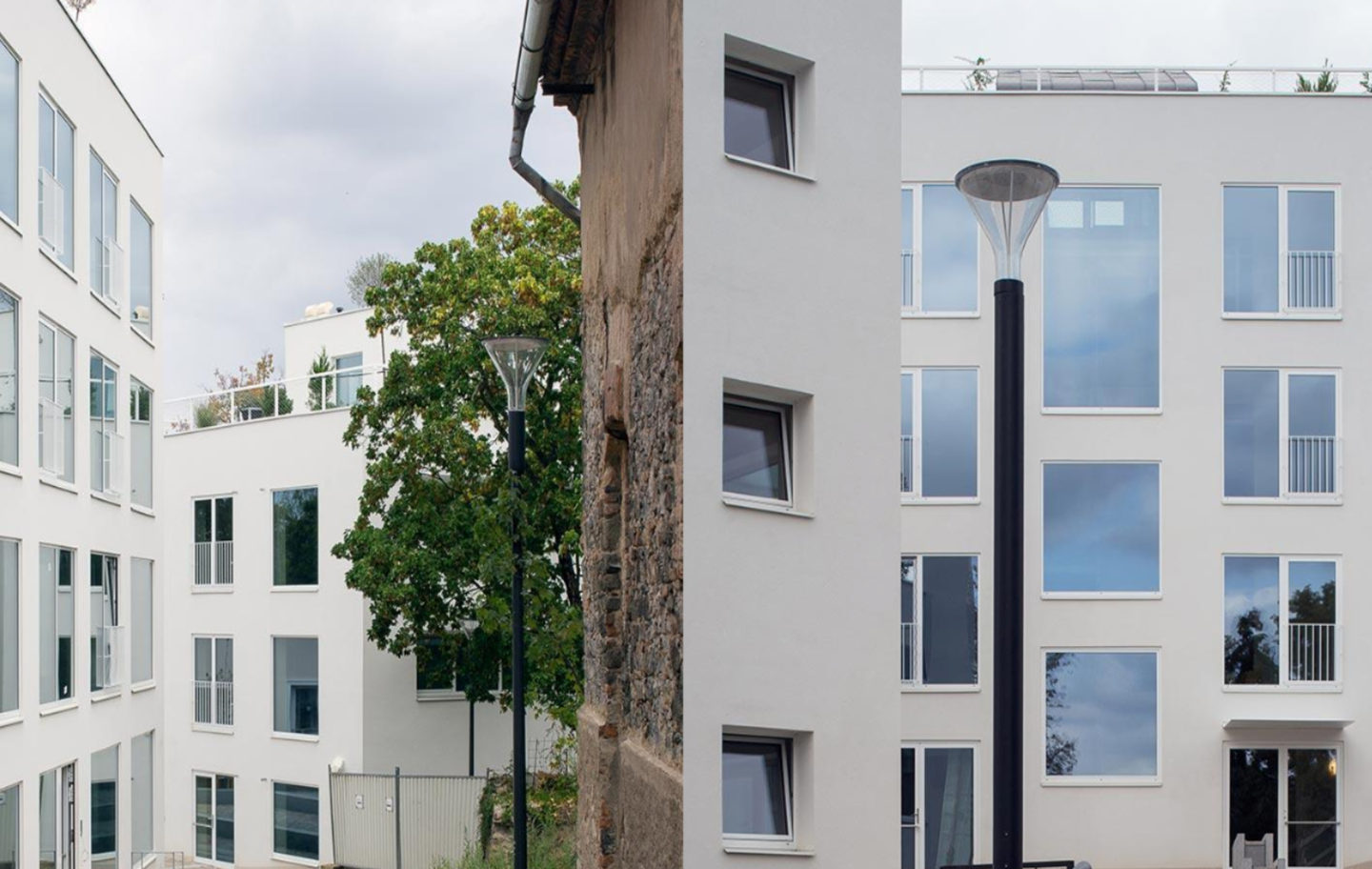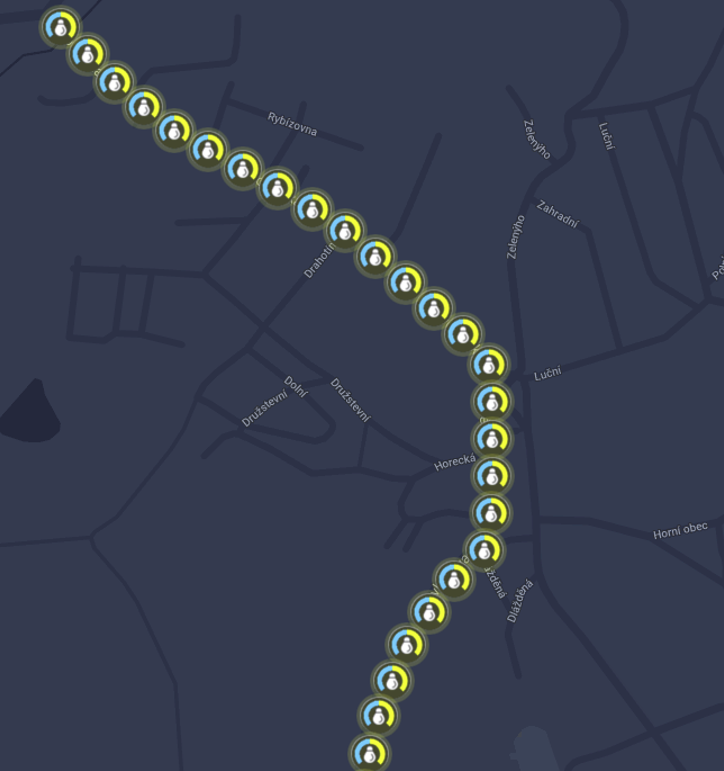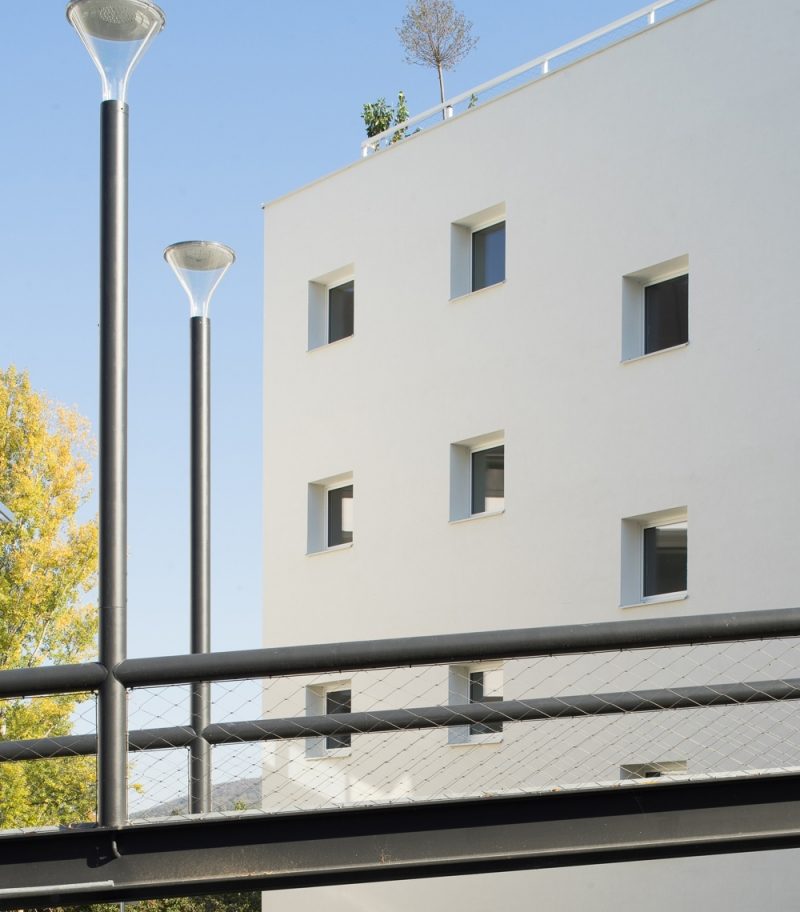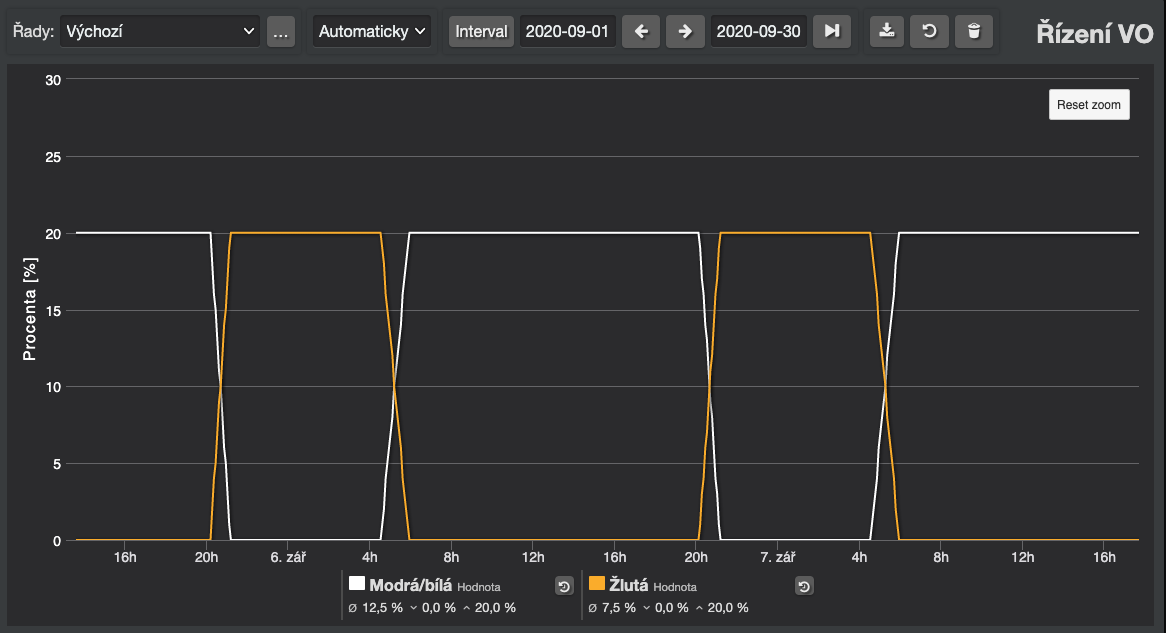CASE STUDY - BIODYNAMIC LIGHTING
Management of biodynamic public lighting
In the town of Řevnice architects have designed a complex of five new apartment buildings and one newly renovated building.

Corso pod Lipami
Stand-alone buildings are surrounded by large trees that complement the quiet atmosphere of the whole apartment complex named „Corso Pod Lipami“. The project won the Architects Grand Prix – National Architecture Awards 2019.
A part of the project, completed in 2019, was the management of biodynamic lighting of pedestrian zones in residential areas.
Elimination of light pollution and its effects on human health, higher efficiency, and lower energy consumption
Replacing public lighting with LED energy-saving sources brings, a part of savings, also a negative effect on the human body in the form of ‘blue light’.
These new LED light sources beam with a higher and more unnatural intensity that is not pleasant to the human eye and brain. Today’s white LEDs produce ‘blue light’ that is natural for daytime, during which we do not need to use artificial lighting but is unnatural during nighttime.
One of the issues is the dazzling effect. Since blue light is dissipated more in the human eye, white LED diodes can easily dazzle drivers and pedestrians, in the worst case it can damage the retinas.
Another issue is the disruption of the day-night rhythm. This is because blue light wave lengths block the production of melatonin (sleeping hormone). This hormone is produced by a pineal gland and affects the hypothalamic pituitary system, and its increase relates to the need to sleep.
It is therefore very important in the control of the day-night rhythm. The human body therefore does not receive proper signals regarding when to rest, to regenerate, relax, and it is further exasperated by light pollution.
Artificial lighting should be as natural as possible and resemble the way our planet is illuminated by the sun/moon, or day-night cycle. During the nighttime we must adjust the light source adequately in order to minimize/remove its blue component, since this is what affects us in a negative and toxic way.
We implemented dynamic lighting control
Cooperating with a leading expert on this matter, the investor of building complex and the town representatives we were between the first ones in the world who implemented nontoxic lighting with dynamic intensity control (Biological Dynamic Lighting) in a real environment.

Solution
It is a unique project that should be an example for many other residential areas due to its innovativeness. Energy-saving LED light sources are controlled by the FLOWBOX platform that, according to astronomical time, dynamically and smoothly decreases the blue and increases the yellow and red component with increasing darkness. At dawn it is exactly the opposite.

Solution architecture
Between the individual lamps for public lighting, a backbone bus network was created that communicates with LED drivers using the DALI protocol. Each LED driver powers and services a dedicated LED chip for dynamic control of the color spectrum.
It is possible to physically connect individual LED drivers with the DALI interface using a cable network or use wireless bus and communication networks.
In the case of wireless solution, the LED drivers are supplied with a wireless DALI module that enables communication with LED drivers.
Parametrization, configuration, control and administration are done by the FLOWBOX platform.
